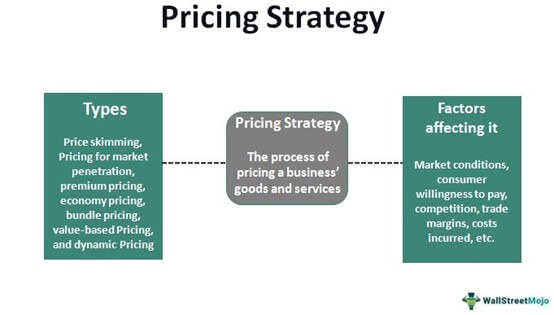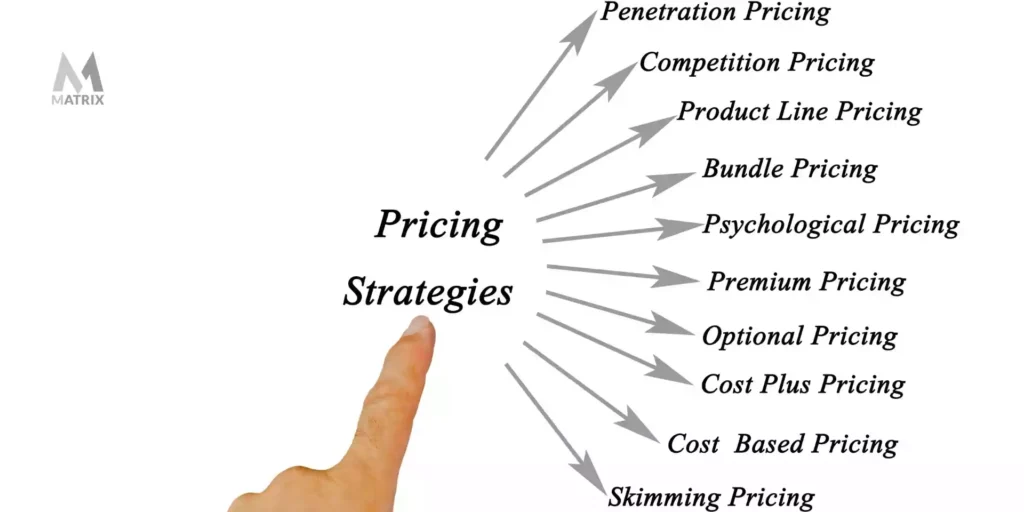Why Versatility is Essential in Developing Your Pricing Strategy
Why Versatility is Essential in Developing Your Pricing Strategy
Blog Article

Master Effective Prices Methods to Maximize Earnings
In the ever-evolving landscape of commerce, grasping effective rates approaches is crucial for companies intending to make best use of profit. A nuanced understanding of pricing psychology can substantially influence consumer habits and acquiring choices.
Comprehending Rates Psychology
Understanding pricing psychology is critical for services aiming to enhance their rates strategies. This field examines how consumers view prices and how these assumptions affect their purchasing decisions. Key concepts in prices psychology include the anchoring impact, where the first price presented functions as a recommendation point for consumers, and the idea of price sensitivity, which differs amongst different consumer segments.
In addition, businesses can take advantage of the idea of perceived value, where the perceived benefits of a product and services can validate a higher cost factor. Premium rates can produce a mood of exclusivity, attracting consumers that connect greater rates with superior quality. On the other hand, emotional prices, such as setting a cost at $9.99 as opposed to $10, can considerably influence consumer habits by making costs appear extra attractive.
In addition, scarcity and seriousness can enhance the regarded worth of products, prompting quicker getting decisions. Recognizing these mental triggers makes it possible for organizations to develop pricing strategies that not only drive sales however additionally foster customer commitment. Therefore, mastering pricing psychology is vital for reliable prices technique solution, resulting in enhanced success and market positioning.
Carrying Out Value-Based Rates

First, conduct extensive market study to identify the value chauffeurs for your target audience. This can consist of features, top quality, brand name track record, and customer support. Next, section your customers based upon their determination to pay and the value they view. By doing so, you can customize offerings and rates strategies to straighten with different sectors.
Continuously keep track of market problems and consumer feedback to improve your prices approach over time. By carrying out value-based pricing, organizations can enhance productivity while promoting lasting consumer loyalty.
Checking Out Dynamic Prices Models
In today's quickly changing market landscape, dynamic pricing versions have become an effective approach for businesses seeking to maximize revenue and react to fluctuations popular. These versions allow business to readjust their prices in real-time based on numerous variables such as customer behavior, market trends, and supply degrees. By leveraging information analytics and algorithms, businesses can recognize optimal pricing points that optimize sales while staying competitive.
Dynamic rates can take various types, including time-based rates, where prices vary based upon time of day or season, and demand-based rates, which adjusts prices according to current consumer need. This versatility not just improves earnings but likewise enhances customer fulfillment by supplying rates that show real-time market problems.
Carrying out dynamic pricing needs a robust technical framework and a deep understanding of consumer segments. It is critical for companies to check market signals and customer reactions constantly, guaranteeing that rates approaches line up with wider company purposes. Clear interaction concerning prices changes can aid mitigate client dissatisfaction and foster depend on, inevitably leading to sustained earnings in an affordable industry. Accepting dynamic prices can therefore be a transformative technique in the pursuit for optimizing revenue.
Analyzing Competitor Prices
Checking rival prices is crucial for businesses intending to maintain a competitive edge in look here their respective markets. By examining competitors' prices methods, firms can determine market fads, comprehend customer preferences, and readjust their rates accordingly. This analysis involves celebration sites information on rivals' costs, advertising techniques, and product offerings to inform pricing decisions.
To properly evaluate competitor pricing, services need to utilize different tools and strategies, such as cost tracking software application, market research study reports, and customer feedback. This information can expose how competitors position their services and products, permitting companies to separate their offerings or take on similar approaches to remain appropriate.
Additionally, it is essential to categorize competitors into direct and indirect competitors. Direct competitors provide similar service or products, while indirect competitors may accomplish the same consumer requirement with various services. Comprehending the nuances in between these groups will enable companies to customize their pricing strategies better.
Eventually, ongoing competitor pricing evaluation is important for making enlightened pricing decisions. It enables businesses to continue to be nimble in action to market changes, ensuring they can take possibilities and mitigate threats connected with rates techniques.
Evaluating Prices Efficiency
Comprehending just how rival rates affects market dynamics results in an all-natural concentrate on examining prices efficiency within one's own business. This analysis is important for determining areas of toughness and possibilities for improvement, inevitably enhancing earnings.

Furthermore, conducting normal prices audits can disclose inconsistencies in between anticipated and actual efficiency. This includes contrasting rates data across various sections and channels to comprehend variations and identify fads. Moreover, incorporating customer feedback can give insights right into regarded worth versus real rates, making certain alignment with market assumptions.
Finally, leveraging information analytics devices can facilitate deeper understandings into prices efficiency, allowing businesses to make data-driven changes (Pricing Strategy). By constantly examining pricing performance, companies can adjust to market modifications and optimize their strategies, making sure continual productivity in an affordable landscape
Conclusion
By leveraging prices psychology, click here for more companies can boost viewed value and dressmaker pricing to diverse consumer segments. The fostering of value-based and dynamic pricing versions helps with real-time changes based on demand and client desire to pay.
Recognizing prices psychology is important for businesses intending to enhance their pricing strategies. Comprehending these emotional triggers enables services to formulate prices approaches that not only drive sales however additionally foster customer loyalty. Hence, grasping pricing psychology is vital for reliable prices approach formula, leading to boosted productivity and market positioning.
By examining rivals' prices approaches, business can identify market fads, understand consumer preferences, and change their pricing appropriately. By leveraging prices psychology, services can boost viewed worth and tailor pricing to diverse consumer sectors.
Report this page